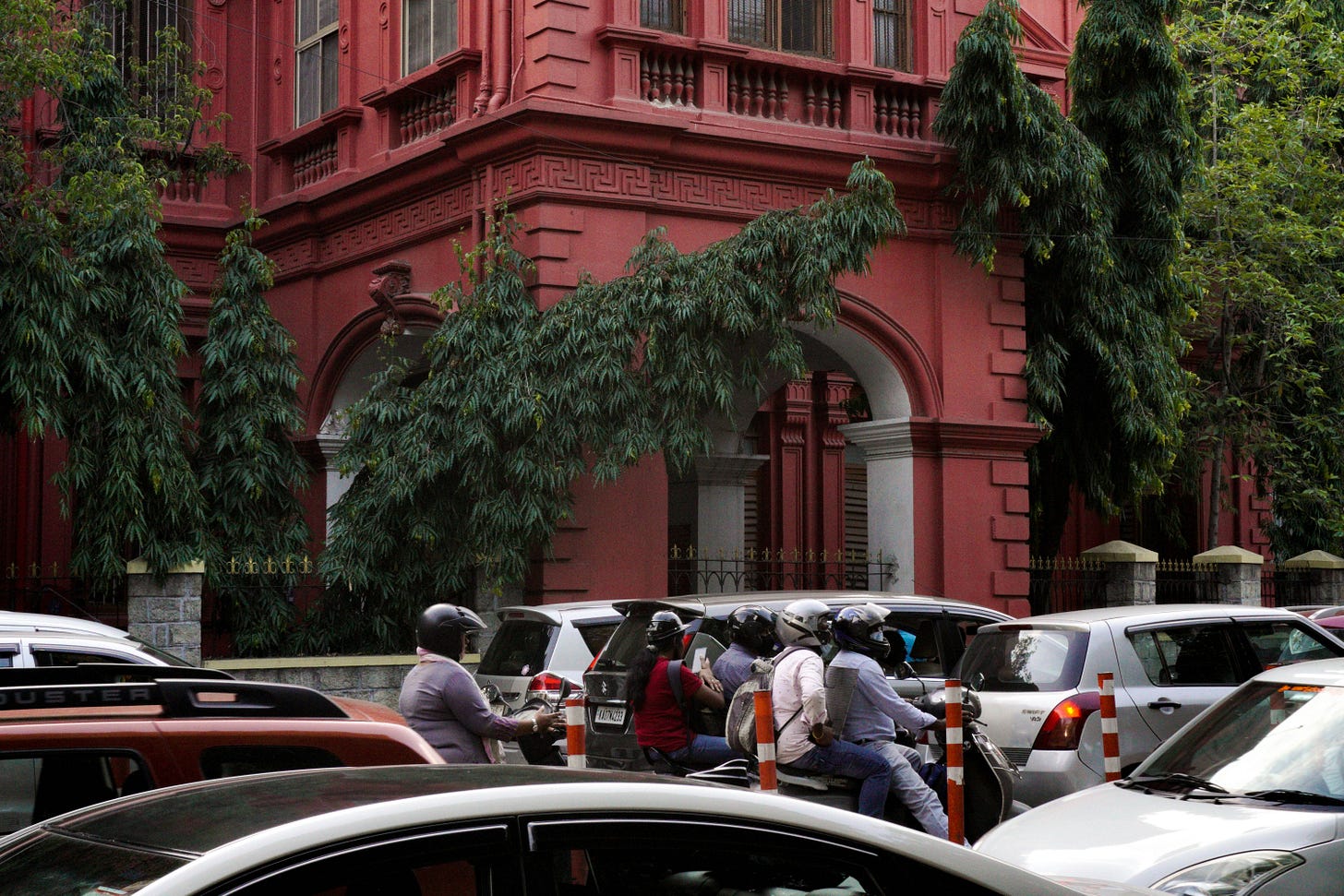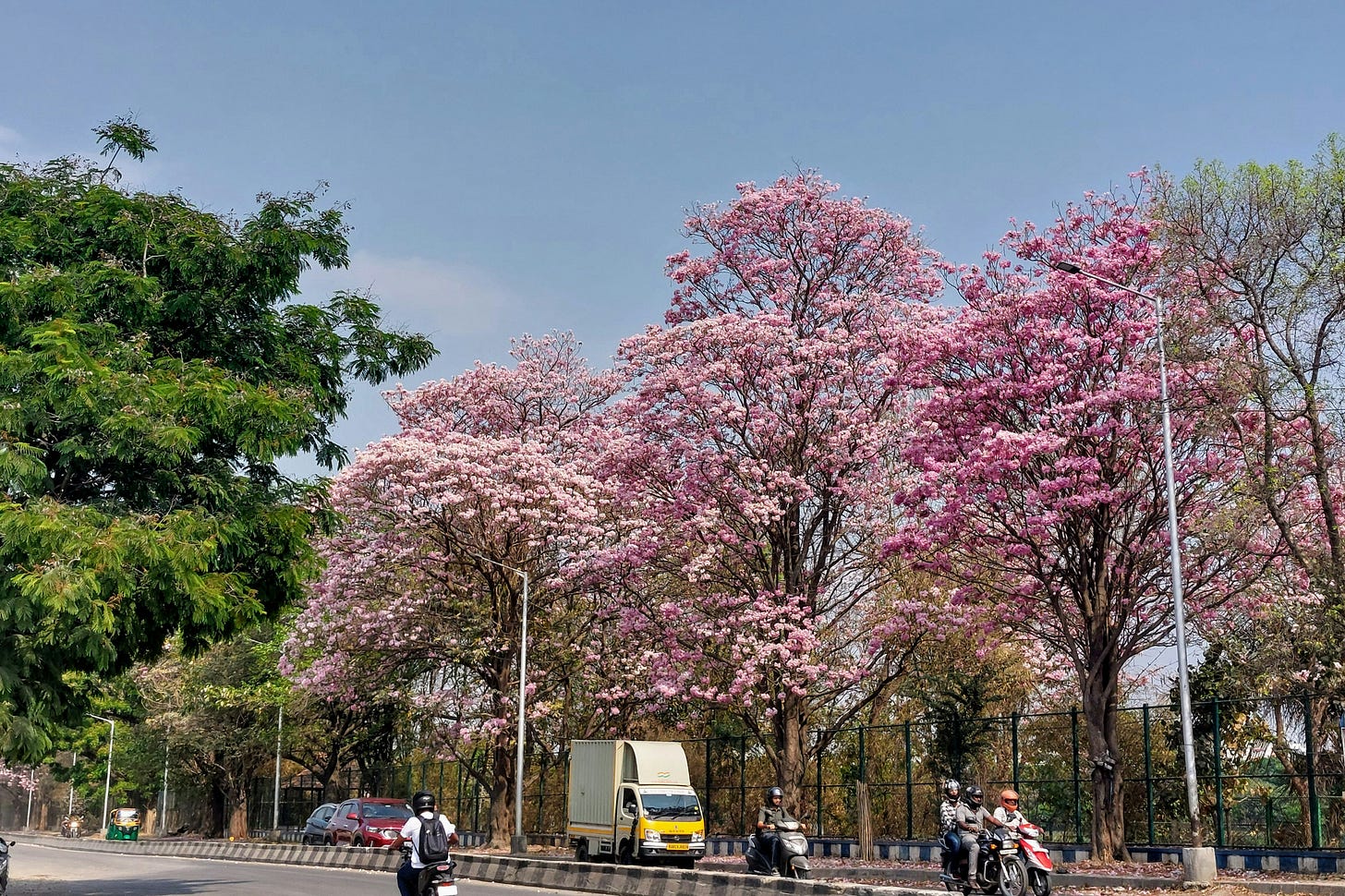The Bangalore School of Traffic
The slow crawl of a city in motion
In Bangalore, traffic isn’t a nuisance. It is a parallel reality: part philosophy class, part endurance sport, part absurdist theatre.
Every junction has its own dialect of horns. In Indiranagar, it’s a polite tap – like saying “excuse me” at a cocktail party. At Silk Board, it’s a full-blown orchestra, each driver convinced they are the conductor of chaos. On Outer Ring Road, the horn is no longer a horn; it is a long, existential wail, a cry for deliverance that could be mistaken for grief.
MG Road plays its own jazz – quick, impatient bursts, like someone restlessly tapping their foot. Whitefield’s horns sound exhausted, like sighs on repeat – less urgency, more surrender. Hebbal flyover is pure percussion, a rolling thunder of honks echoing against concrete pillars. And Koramangala? That’s improvisation at its finest – scooters cutting in with cheeky beeps, autos offering comic relief, cars thundering in as bass line.
Together, they form the background score of Bangalore. Not Carnatic, not Bollywood, not indie rock – but a sprawling, unscripted traffic opera.
And the stagecraft doesn’t end here. Lane discipline is a myth, like unicorns and efficient government offices. Two-wheelers invent new lanes on footpaths, SUVs straddle three lanes at once, buses lunge like bored bullies picking fights, trucks drift diagonally as if sketching abstract art on asphalt, and everyone still meets at the same red light together – a reminder that chaos is oddly democratic.
Time behaves differently here. A two-minute red light stretches into twenty. You can finish half a podcast, re-evaluate your career choices, and still watch the same cow amble past four times. Bangalore isn’t a tech hub; it is a time machine with brake lights. And in that warped pocket of time, you aren’t just stalled. Sometimes, you are scarred.
Once, inching through a jam with my husband, we watched an uncle on an Activa slip past our car and park himself beside a cow at the divider – a cow midstream. With the ease of someone topping off his water bottle, he cupped his hand under the pale yellow fountain, took a sip, anointed his head, and rode off like it was a perfectly natural pit stop. Nobody around us blinked an eye. We sat frozen, gagging in stereo, unable to speak for the rest of the ride. Bangalore traffic gives you many things; that day, it gave me trauma.
For all its absurdity, traffic carries its own strange philosophy. Staring at brake lights until they blur into red halos can feel like meditation. Nirvana, in Bangalore, is always two U-turns and a pothole away. Flyovers are built and announced like salvation, only to funnel us into the next bottleneck. They’re less solutions, more metaphors for adulthood: promises of speed that still leave you stuck. On a flyover, the only thing that accelerates is your blood pressure.
Relationships bend to traffic too. People don’t ask where you live; they ask how long it will take to reach you. Google Maps’ ETA decides whether friendships endure, dinners happen, and love affairs survive.
Meanwhile, the jams grow their own ecosystems. Vendors weave between cars selling guavas and peanuts. Beggars tap on windows in practiced rhythm. A cow chews with absolute calm in the median. And Ola drivers brush their teeth cruising at 40 kmph at 8 am. Proof that life, like traffic, always finds a way.
And still, even in gridlock, Bangalore offers its quiet mercies. The setting sun filtered through the vast canopies of rain trees. Bougainvillea spilling riotously against grey compound walls. A polite pedestrian waiting patiently as traffic snarls around them. These are the moments you notice only when you’re forced to stop; when the city compresses your speed but widens your gaze.
The jams may hold you captive, but they also teach you to look up: to see the tabebuia blazing pink against the sky. Bangalore traffic doesn’t just test your patience; it rewrites it, bending time and space to remind us that even in the choke of horns, flowers still bloom.



